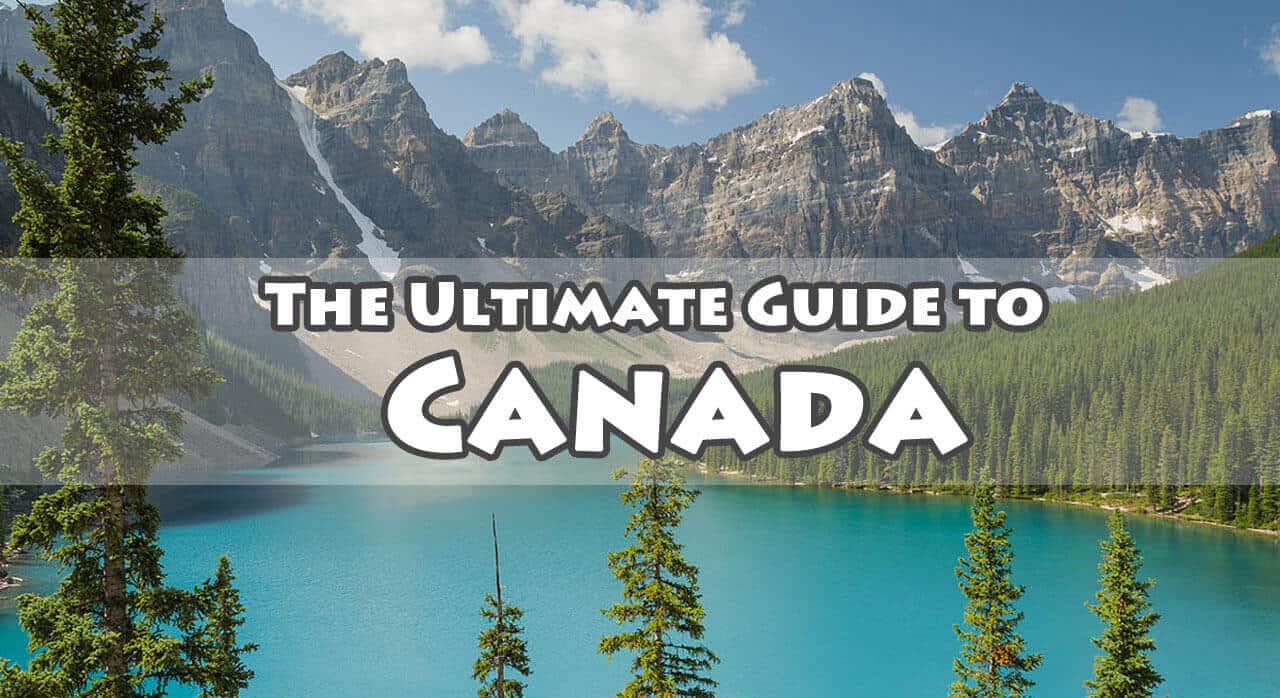
The mistake most travellers make when visiting Canada is to underestimate its size – this is a huge country, the 2nd largest in the world. So any itinerary that, for example, tries to cover Toronto, Ottawa, Montreal, and Quebec City in one week is crazy. If you’re going to visit Canada my biggest recommendation is that you focus on a specific region of interest and not try to stuff the whole country into one visit.
Having said the above, Canada is a country that has as much to offer as its size. This is a spectacularly beautiful country full of varied landscapes, regional cultures (and cuisines), cosmopolitan cities, and friendly people. One of the aspects of Canada that foreigners (especially Europeans) often comment on is the abundance of space in Canada – huge, often rustic, national parks are everywhere and you can (willingly) lose yourself in nature. Experiencing Canada’s wilderness and natural beauty is in fact the primary reason travellers choose to visit the country.
Trademarks? Hockey players, moose, beaver, Mounties, maple syrup, poutine, Igloos, Native Americans in full dress, people saying “eh?”, Celine Dion, Tim Horton’s, Bryan Adams, loonies & toonies, tuques, tortiere, Molson beer, bacon, strippers who bare it all, long winters, polite people who all know each other, polar bears. But like anywhere else a lot of these generalizations are gross exaggerations of perceptions held by those living outside the country. For example: I always shudder when I read about travellers coming to Quebec who “can’t wait to eat that delicious poutine!”. Fact: most Quebeckers never eat poutine. The majority of poutine restaurants are in fact located in Old Montreal where all the tourists go, thereby perpetuating the misconception among tourists that Quebeckers all eat that vile brown stuff and that “there are poutine restaurants everywhere”. Also: although there’s not that many of us, we don’t all know each other. I was once in a small town in Thailand and a tour guide asked me if I know his friend Peter who lives in Toronto. As I told him, Canada’s a pretty big country and I can’t be expected to know each of its 42 million or so people.
Keep in mind what I said in my opening paragraph about not trying to see everything at once. I’m going to cover Canada’s attractions by region (further below) , going from west to east, then going north, giving you an overview of the country. Before getting into that though I will give the first time Canadian visitor an itinerary recommendation: See either the West (Vancouver, Vancouver Island, the BC interior and Canadian Rockies) using Vancouver and Calgary as beginning/end points, OR, alternatively, see the East (Niagara Falls, Toronto, Ottawa, Montreal, Quebec City) using Toronto and Montreal as beginning/end points. This recommended itinerary is based on 2 weeks’ vacation and my beginning/end points are major cities that have a large selection of flight options. If you only have a week the above is too much and you’ll have to trim it down – the above itineraries are already quite ambitious considering the distances to cover. Alternatively, check out the rest of this Guide and make up your own itinerary based on your specific interests.
Note: I lived in Montreal almost 30 years. This blog has tons of resources on both Montreal and the province of Quebec. See here for a detailed guide on Montreal, here for my many posts on the city, and here for all my posts on the incredible natural beauty found in the province.
Overview of Canada’s regions, from West to East
Vancouver is Canada’s most beautiful city. It is also my favorite (my 2nd favorite is Montreal). It’s a gorgeous city, facing the ocean on one side and backed by the snow-capped Coast Mountains on the other. It’s sophisticated, temperate (no crazy Canadian winters here), multicultural, and has an incredible infusion of nature with fantastic parks and beaches. Gleaming glass condos reflect ocean and sky, huge totem poles reflect the large role of Native Americans. They like to say that in Vancouver you can spend the morning at the beach and the afternoon hiking in the mountains. Visit Stanley Park (huge park with hiking trails, beaches, and bike paths), Granville Island (which features a large market), stroll down Robson Street for dining and shopping, visit the Aquarium, the Vancouver Art Gallery and the Richmond Night Market in the summer for cheap eats. Go up Harbour Centre for views over the city. Visit Gastown and Yaletown, two trendy neighborhoods. I could write pages and pages on Vancouver alone – it truly is one of the World’s most beautiful cities (for me it’s a mix of San Francisco and Hong Kong). Recommended: this 4.5 hour City Tour.
A few recommended mid-range hotels that are good value for the money: Blue Horizon Hotel (4 star, very nice, they often have special deals), Moda Hotel (3 star, great location, excellent value), and my personal favorite – the Sylvia Hotel right next to Stanley Park.
Note: the orange links are a few recommended tours. If looking for something specific, like a craft beer tour or a helicopter tour, have a look at our getyourguide link. Type in the location you’re interested in and you’ll get a whole bunch of interesting tour options.
.

Sites to visit near Vancouver: Whistler is a premier sports resort (winter sports, hiking, golf, mountain biking), Grouse Mountain is closer to Vancouver and has fantastic views and some great hiking. Cross the 440-ft long Capilano suspension bridge and do some hiking in the area.
Vancouver Island. Getting here on the ferry is a highlight on its own. The views of the ocean and islands are gorgeous, you might even see Killer whales (Orcas) on the way. Victoria, the provincial capital, is a pretty, smallish city, with an English flavour. It has a pretty waterfront, numerous gardens, excellent restaurants, and a superb museum. Whale watching is a popular activity on Vancouver island and Victoria, Tofino, Ucluelet and Telegraph Cove make good bases. The island also has great hiking: the incredible seascapes of the unmissable Pacific Rim National Park, the mountainous vastness of Strathcona Provincial Park, and the popular West Coast Trail are all highlights. If you prefer to do a day tour of Victoria from Vancouver, this full-day tour covers everything including the ferry ride.
Recommended Hotel in Victoria: Victoria Regent Waterfront Hotel & Suites.
.
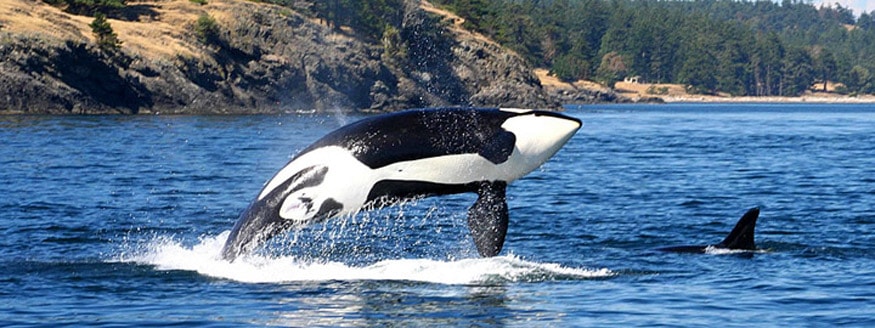
.
The Interior of British Colombia. This area is every bit as spectacular as the Rocky Mountains to the East and the Pacifc and Coast Mountains to the West. Don’t just drive through on the Trans-Canada (Hwy-1) or Hwy-3 – the real attractions lie in the two north-south routes. The Easternmost of these goes through the Kootenay region, an idyllic assortment of mountains and lakes and peaceful towns from the grand Glacier and Revelstoke national parks all the way south to the US border near the attractive old mining town (and skiing and biking haven) of Rossland. Roughly parallel to the west, the next major highway system travels along the arid Okanagan Valley: a Californian-like enclave of orchards, vineyards, warm lakes and resort towns, whose beaches and scorching summers draw hordes of holidaymakers from all over Canada and the western US. Kamloops is the Okanagan’s northern gateway. It’s also on the doorstep of the laidback Shuswap region (an area of lakes and rivers) and the magnificent Wells Gray Provincial Park, a remote collection of exceptional waterfalls and perfect canoeing lakes.
The Canadian Rockies. One of the principle reasons people come to Canada is to visit the (many) highlights of the Canadian Rockies. The range is best known for its long, and virtually unbroken north–south chain of national and provincial parks, and for its world-class ski resorts. Calgary (soon to be covered) is the region’s main gateway – in fact the Rockies rise up from the plains of the prairies just a little bit west of the city. Banff National Park is the region’s best known and busiest park. Just north is the less visited Jasper National Park, by far the largest park in the region. The western boundary of both Banff and Jasper parks is also the provincial border, so adjacent areas are protected in a separate set of BC parks: Mount Robson Provincial Park includes Mount Robson, the highest and most dramatic peak in the Canadian Rockies, while Yoho and Kootenay national parks lie just west of Banff National Park. At the southern end of Canada’s Rockies, and coupled with Glacier National Park in the US, is small but impressive Waterton Lakes National Park. Recommended: Want to see Canada’s most amazing scenery? Have a look at this one way 10 hour Banff to Jasper tour (which includes Lake Louise). You can also do the reverse, Jasper to Banff here.
All the parks have excellent park visitor centers which sell detailed maps of trails – there are over 3000km of hiking and biking trails that crisscross the mountains, the majority being well travelled and well signed. Other activities: fishing, skiing, canoeing, whitewater rafting, rock climbing. Warning: Despite the impression created by the summer throngs in centers like Banff and Lake Louise, with their excellent roads and sleek park facilities, the vast proportion of parkland is wilderness and should be respected and treated as such.
.
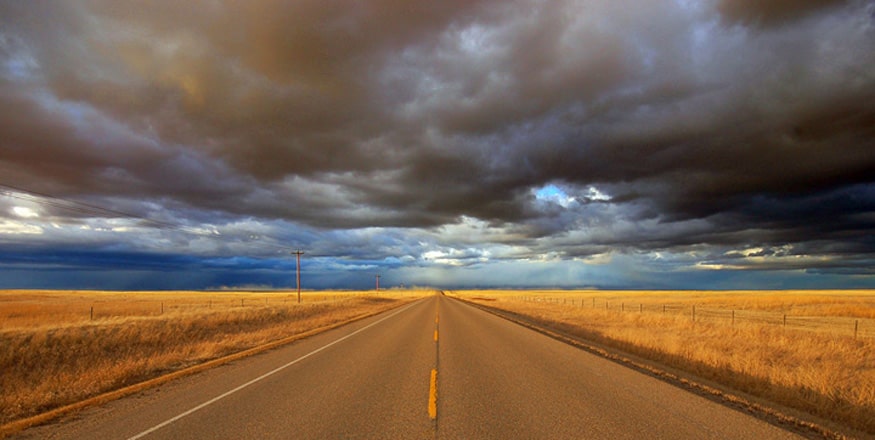
The Prairie Provinces. A wide, HUGE, swath of land extending from Ontario in the east to the Rocky Mountains in the west, the provinces of Manitoba, Saskatchewan and Alberta are referred to as “the Prairies”. It is not the country’s most prestigious region and the scenery is mostly flat and monotonous, featuring field after field of swaying wheat. It is actually stunning to fly over – you’ll see straight roads extending out into the horizon, a few vertical and horizontal lines breaking up the treeless plains. Summers can be scorching here, while winters are brutally cold. People are rural and conservative but also incredibly friendly and welcoming. I used to travel to Winnipeg in the old days and I remember always being charmed by the people in this region.
Although the gateway to the Rocky Mountains, Calgary is also the Western gateway to the prairie provinces. Every summer, it plays host to the Calgary Stampede, a near city-wide celebration of Calgary’s ranching heritage. The city is also home to the Calgary Tower, Calgary Zoo, and Canada Olympic Park (the city hosted the 1988 Winter Olympics). Visit Stephen Avenue Walk, a wonderful location to eat, drink and shop and go to some of the city’s parks (Fish Creek Provincial Park is recommended) for walking and hiking.
Going east from Calgary you’ll go through the intriguing and arid Badlands around Drumheller (once home to dinosaurs), the town of Medicine Hat, crossing the border into Saskatchewan. You may want to visit the attractive coulees and buttes of the pristine and wonderfully empty Grasslands National Park. Saskatchewan features the small town of Moose Jaw and laid back Regina (the provincial capital). Continuing on, you’ll eventually get to Winnipeg, the capital of Manitoba and the Eastern gateway to the Prairie provinces. It’s also smack in the middle of the country – it used to be known as the “Bulls Eye of the Dominion”. Winnipeg has a rich mixture of culture, including Metis and French-Canadian. Winnipeg also contains the Royal Canadian Mint and the old buildings of the Exchange District – Winnipeg has always been the center of the Canadian wheat industry and the Canadian Wheat Board makes its home here. The vibrant Forks area has trendy restaurants and boutique shops and markets and is worth a visit.
Ontario may not have the tourist profile of the Rockies out west, but the province has many of Canada’s top attractions.
Western Ontario has a string of parks bordering Lake Superior, notably the extravagantly wild Lake Superior Provincial Park and Pukaskwa National Park. The most notable town in this area is the inland port of Thunder Bay (680 km east of Winnipeg – yup, the distances are long out here).
Central Ontario is largely defined by the Canadian Shield and its endless forests and myriad lakes. It is hostile terrain has kept settlement down to a minimum, although many urbanites have lakeside cottages here (they call this area “cottage country”). The centre of this is the Muskoka Lakes, an area of narrow lakes and rivers, and the main towns of Gravenhurst and Bracebridge. Nearby, the huge Algonquin Provincial Parkis a popular spot for vacationers from the urban centers of Southern Ontario who come here to enjoy camping, canoeing, hiking, and to spot the abundant wildlife.
.
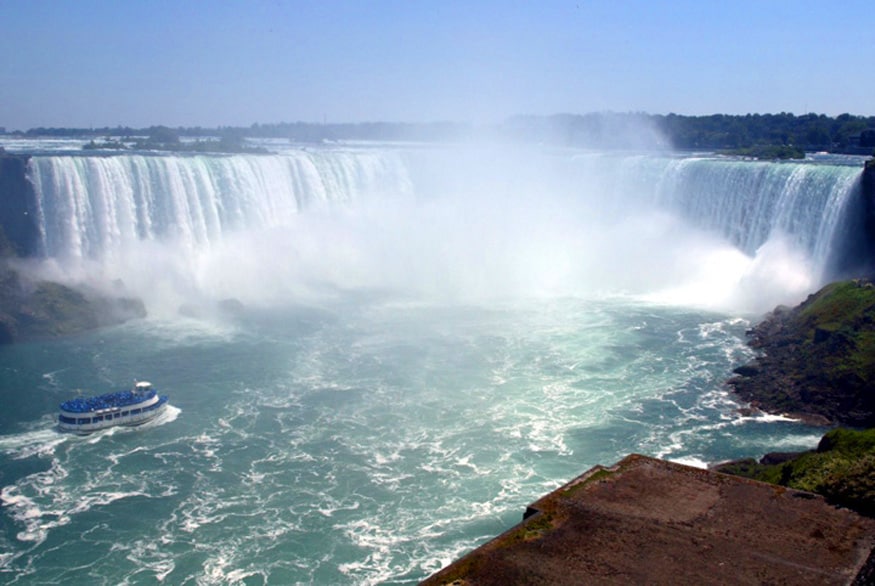
Southern Ontario contains Niagara Falls, which is the country’s most visited site. The falls are spectacular. Make sure you take a boat ride. If you want a day tour to Niagara Falls from Toronto, this one is recommended. The town itself is a bit cheesy and touristy. Nearby is Niagara-on-the-Lake, one of the province’s quaintest towns.
Toronto is Canada’s largest city as well as the country’s financial center. While not the most beautiful (or compact) of cities, it does have its attractions: The 1,800ft high CN Tower, the Rogers Center, the Hockey Hall of Fame, the Harbourfront Center, the Art Gallery of Ontario, the Ontario Science Center…You can go see the Toronto Maple Leafs play hockey or the Toronto Blue Jays play baseball (the only major league team outside the USA). Toronto is a diverse and eclectic city, home to endless neighborhoods that offer quality shopping, cuisine, and cultural amenities. The city is also home to the third largest live theatre scene in the world (after New York and London). A fun tour idea is the 3.5 hour bike tour that’ll take you to all of Toronto’s highlights.
A few recommended mid-range hotels that are good value (which is not easy. Toronto is expensive): Double Tree by Hilton (a 4 star. They often have special deals), Chelsea Hotel Toronto, Grand Hotel & Suites. Better value: Hotel Ocho.
Sitting in Eastern Ontario with a view of Quebec across the river, Ottawa is the national capital of Canada. It’s home to Parliament Hill, many national museums, the ByWard Market, the Rideau Canal and Rideau River, and the best Canada Day celebrations in the country. It’s a laidback, green city with lots of parks and bicycle trails. This 4 hour tour will cover all of Ottawa’s highlights. Also at its doorstep in Quebec is the beautiful Gatineau National Park.
Recommended Hotels: Alt Hotel Ottawa (right downtown, good value). For a special stay the Fairmont Chateau Laurier.
Mid-way between Montreal and Ottawa is Kingston, a pretty and historic town situated on Lake Ontario.
.
Montreal and southwest Quebec. Crossing the border into Quebec means the end of English signage on the autoroute (from here on its unilingual French).
Montreal, where a third of all Quebeckers live, celebrates both its European heritage and its reputation as a truly international city. It is a cosmopolitan place, full of sexy people, great nightlife, and historical attractions. Most people speak both English and French, often switching back and forth in the same sentence (we can it ‘franglais’). Go up ‘the mountain’, see Old Montreal, ride a bike through the city’s parks…I lived in Montreal over 25 years and have a very detailed guide on the city here.
Around Montreal: visit the hilly Laurentians to the north. There are many small towns that offer outdoor activities year-round, including cycling, hiking and horse riding trails in the summer and downhill ski centers and cross-country skiing in the winter. A favorite among tourists is Mont-Tremblant village (90 minutes from Montreal), a resort built by the same people who built Whistler in BC. To the south and east of Montréal, the Eastern Townships (Cantons-de-l’Est), are full of small towns popular with those wanting to get out of the city. This area is very bilingual, part of that due to the Anglo Heritage, part of it due to the US border being just a few kilometers away. Some of my favorite hikes in Quebec are in this area (see Mount Pinacle and Mont Megantic).
Quebec City and Eastern Quebec. About 3 hours drive east of Montreal lies Quebec City, the province’s capital. It is well known for its quaint Old City, it’s grand winter festival, and gorgeous architecture. The highlight is the Chateau Frontenac, which overlooks the St. Lawrence river. Visitors love Quebec City’s charming European feel and many like to wander the little streets of the Old Town. Nowhere else in Canada compares to Quebec’s Old City. The city is also the most easterly point that connects the north and south shores of the St. Lawrence. Beyond the city (going east), the waterway broadens dramatically and the only connection between the north and south shores is by ferry. This inexpensive 2 hour tour of Quebec City is recommended.
Recommended Hotels: Hotel Port-Royal. For a very special place you can’t beat the Chateau Frontenac.
More: How to spend 2 days in Quebec City
.
The southern shore of the St Lawrence is less remote than its counterpart, with the agricultural Bas-Saint-Laurent (Lower St Lawrence)the gateway to the rugged and lightly populated Gaspé Peninsula. It is a beautiful region of sharp cliffs, dramatic scenery, and lighthouses. In the interior, the Chic Choc mountains contain some of the province’s best hikes.
Just outside of Quebec City, along the northern shore of the St Lawrence, it is worth stopping at Montmorency Falls. It is the highest waterfall in the province of Quebec and is a nice place to stretch the legs and walk around. This full day tour covers both Quebec City and Montmorency Falls.
.
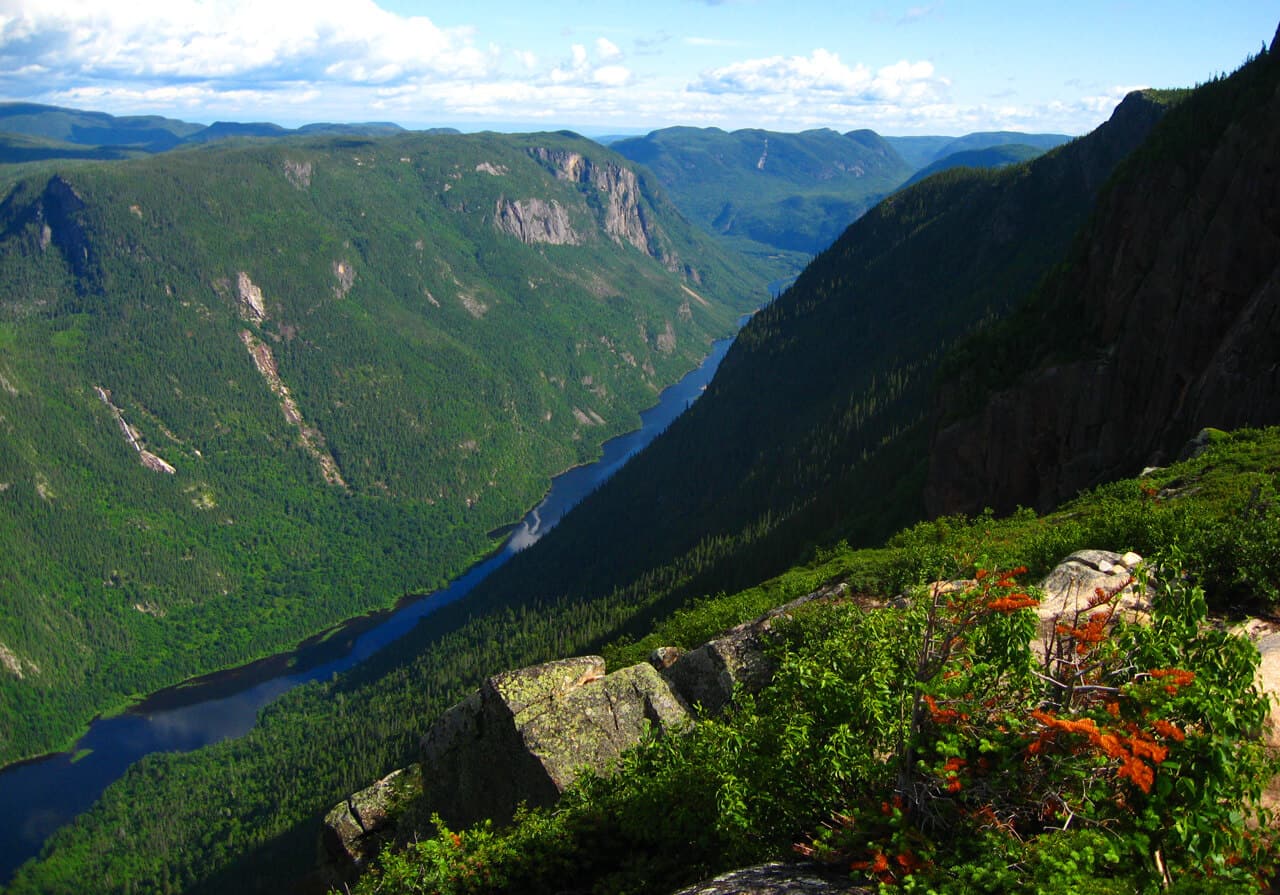
Further northeast of Québec City is the beautiful Charlevoix region, all idyllic villages and towns that bear the marks of Québec’s rural beginnings. A popular tourist town is Baie St-Paul, a pretty little town known for its art galleries. Located in a bay, it is a good base to explore some of the mountainous national parks in the interior – recommended for spectacular hikes are Parc National des Grands Jardins and Parc des Hautes Gorges de la Riviere Malbaie.
Further along is my favorite town in the whole province of Quebec: Tadoussac. It is a small town, popular for its whale-watching and hiking, and draws an international crowd. Tadoussac is located at the juncture of the St Lawrence and Saguenay Rivers – besides the marine attractions of the St Lawrence, it also offers great hiking opportunities along the Fjord of the Saguenay.
.
Related: The top Places to Visit in the Province of Quebec
Maritime provinces. Canada’s Maritime Provinces – Nova Scotia, New Brunswick and Prince Edward Island – are dominated by the sea, with a long, jagged coastline punctured by picturesque bays, sandy beaches, towering cliffs and some of the prettiest towns in Canada. This region also has the freshest, tastiest lobster in the world.
Most travellers focus on Nova Scotia, where the provincial capital of Halifax makes an appealing base from which to explore the picturesque coastline. A ‘must see’ is the lighthouse at rocky Peggy’s Cove. Further along is Cape Breton Island, home to one of the most scenic drives in the world. Driving from the US or the rest of Canada, you’ll pass through the often overlooked province of New Brunswick which contains the Acadian coast and the Bay of Fundy, whose taper creates tidal variations of up to 12m. Prince Edward Island (PEI) (made famous by Anne of Green Gables) is linked to the mainland by the whopping Confederation Bridge and possesses one of the region’s best culinary scenes. PEI is a beautiful small island of green hills and red sand which has to be seen. Leafy, laidback Charlottetown is worth at least a day’s visit. Make sure to see the magnificent sandy beaches of the Prince Edward Island National Park.
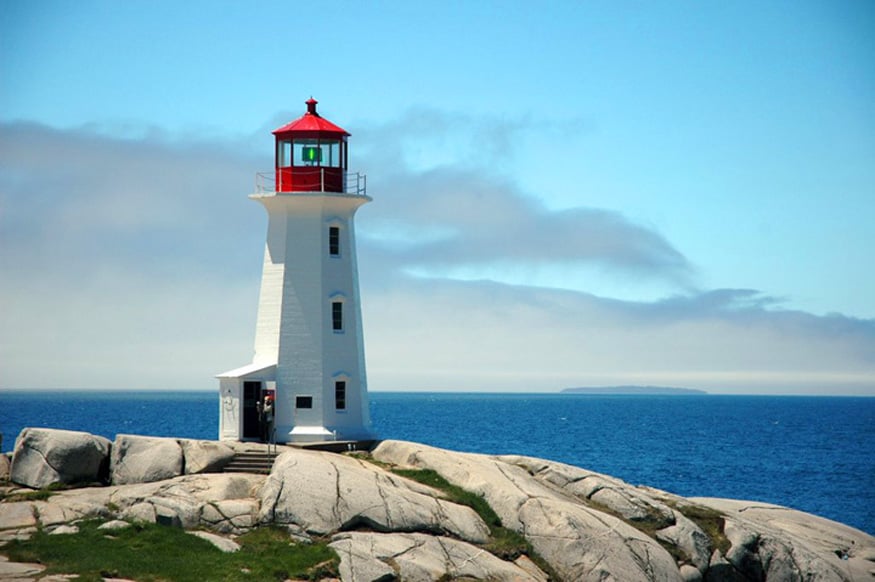
Canada’s Northern provinces and Territories
I’ve gone West to East. I’ll now cover some of Canada’s Northern provinces and Territories. Few people make it to these places, but they are worth a mention.
Newfoundland and Labrador. Isolated and rugged, Newfoundland doesn’t get many tourists. Most visitors fly to St John’s, which provides the best introduction to island life with its museums, enticing restaurants, bars and flourishing folk music scene. The city is also within easy distance of the whale-watching at Bay Bulls, the lighthouses of Cape Spear and the East Coast Trail, providing opportunities for everything from short hikes to a full-scale expedition.
Gros Morne National Park, 700km west of St John’s, features wondrous mountains and glacier-gouged lakes, while another 350km north of the park, at L’Anse aux Meadows, lie the scant but evocative remains of an eleventh-century Norse colony. There is a remarkable hotel in the old lighthouse on Quirpon island. The southern coast of Newfoundland has the wild and windswept Burin Peninsula, which is a quick ferry ride from French-speaking St-Pierre et Miquelon (a tiny archipelago that is actually a ‘department’ of France).
Labrador, though part of mainland Canada, has been tied to the island of Newfoundland since the 1760s, yet here too you’ll find a strong sense of identity, one that blends recent arrivals with ancient Inuit and Innu traditions. Unimaginably vast, Labrador boasts some of Canada’s highest mountains, a jaw-dropping national park, a spectacular shoreline and a forested hinterland teeming with wildlife. A trip here is a true adventure.
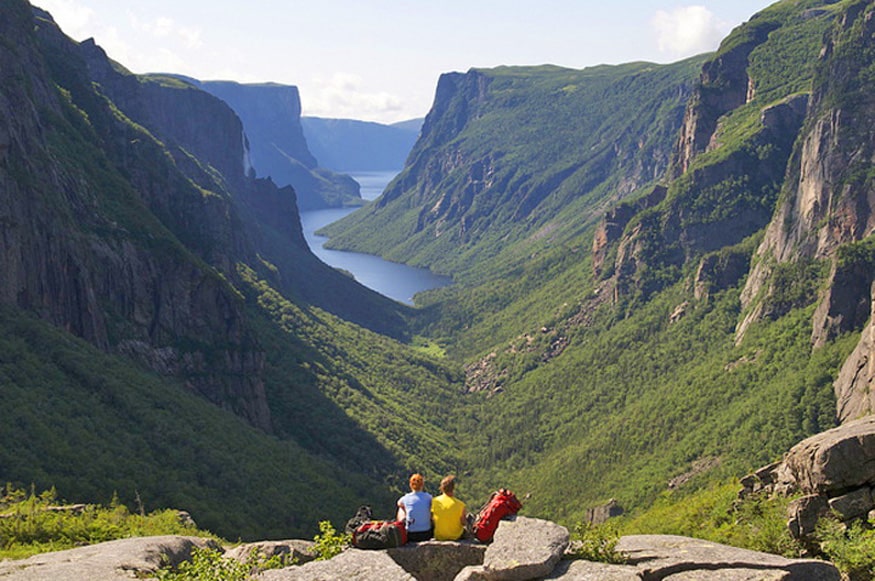
.
The North. Although much of Canada still has the flavour of the “last frontier”, it’s only when you embark north to the Yukon, Northwest Territories or to Nunavut that you know for certain you’ve left mainstream North American life behind. In the popular imagination, the North figures as a perpetually frozen wasteland blasted by ferocious gloomy winters, inhabited – if at all – by hardened characters who make do without civilization. In truth, it’s a region where months of summer sunshine offer almost limitless opportunities for outdoor activities and an incredible profusion of flora and fauna.
The North is as much a state of mind as a place. People “north of 60” – the 60th Parallel – claim the right to be called Northerners, and maintain a kinship with Alaskans, but those north of the Arctic Circle – the 66th Parallel – look with light-hearted disdain on these “Southerners”. This part of the guide includes not just the territories of the “true North” (the Yukon, the Northwest Territories and Nunavut) but also Northern British Columbia and Alberta, regions of both provinces that are considerably starker and more remote than areas further south.
The Alaska Highwayheads up from the eastern side of British Colombia , connecting Dawson Creek to Fairbanks in Alaska. To the west is the Stewart-Cassiar Highway going from Prince Rupert to Watson Lake, on the Yukon border. Though the Stewart-Cassiar’s passage through the Coast Mountains offers perhaps the better landscapes, it’s the Alaska Hwy – serviced by daily Greyhound buses and plentiful motels and campsites – that is more travelled. While the scenery is superb, most towns on both roads are battered and built around lumber mills, oil and gas plants and mining camps. Popular are the sea journeys offered along northern BC’s coast, among the most breathtaking trips in Canada. Prince Rupert, linked by ferry to Vancouver Island, is the springboard for boats to the magnificent Haida Gwaii (formerly known as the Queen Charlotte Islands) and a vital way-station for boats plying the Inside Passage up to Alaska.
The Stewart-Cassiar and Alaska highways converge at Watson Lake, marking the entrance to the Yukon Territory. This region is truly bear country: 34,000 people live in the Yukon alongside ten thousand black bears and seven thousand grizzlies. It boasts the highest mountains in Canada, wild sweeps of boreal forest and tundra, and the fascinating nineteenth-century relic that is Dawson City. The focus of the Klondike gold rush, Dawson was also the territory’s capital until 1952 when that role shifted south to Whitehorse (the Klondike Highwaylinks the two cities). North of Dawson, the Dempster Highwayis the only road in Canada to cross the Arctic Circle, offering a direct approach to the northern tundra and to several remote communities in the Northwest Territories. The Yukon’s other major road is the short spur linking the Alaskan port of Skagway to Whitehorse, which shadows the Chilkoot Trail, a popular long-distance footpath.
Combining coastal ferries with the Chilkoot Trail makes for an interesting itinerary. Take the ferry from Prince Rupert to Skagway, follow the Chilkoot to Whitehorse, before heading north to Dawson City. From there you could continue up the Dempster Highway, or travel on the equally majestic Top of the World Highway into the heart of Alaska. Alternatively, many people coming up from Skagway head to Alaska directly on the Alaska Hwy to enjoy views of the extraordinary and largely inaccessible mountain vastness of Kluane National Park, which contains Canada’s highest peaks and most extensive glacial wilderness.
The Northwest Territories (NWT) are even harsher than the Yukon. Just three roads nibble at the edges of this almost unimaginably vast area, which occupies a third of Canada’s landmass – about the size of India – but contains only forty-one thousand people, almost half of whom live in or around Yellowknife, the territories’ colourful capital. This is the end of the road for most people. A few crazy travellers do go on however, continuing across the tundra to Inuvik. What to do in the Northwest Territories? fish, canoe, hunt, hike, watch wildlife or experience the aboriginal cultures and ethereal landscapes.
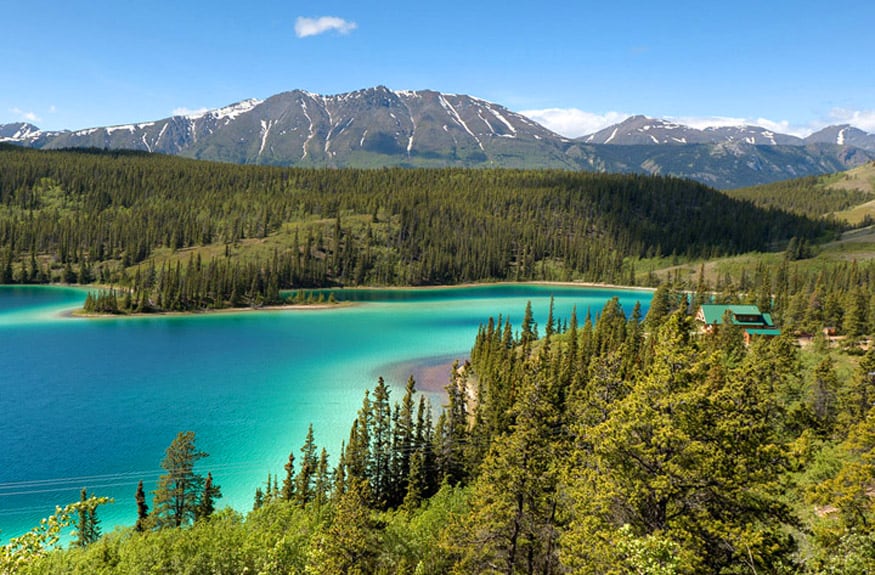

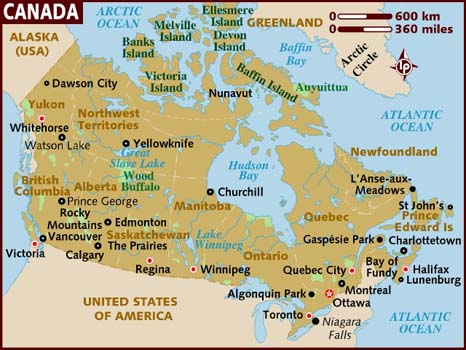
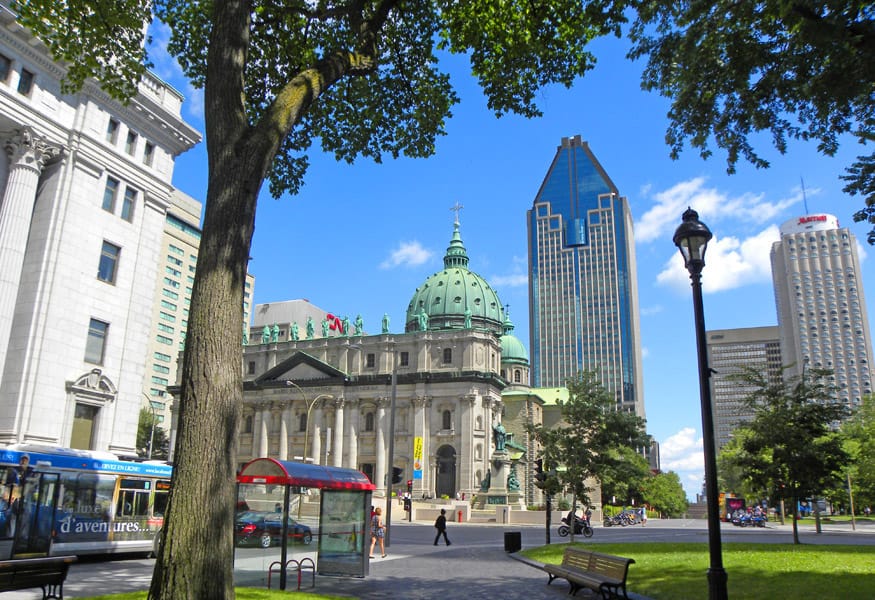
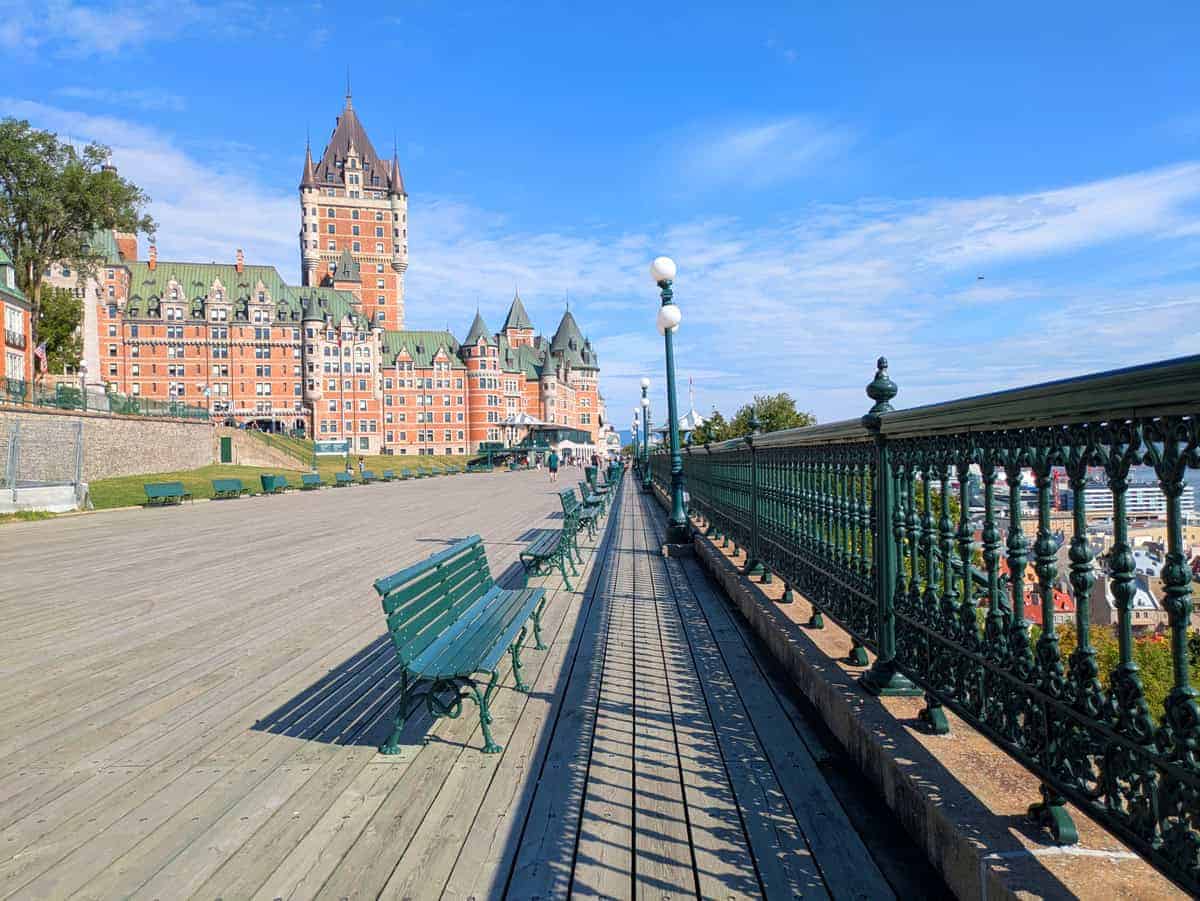

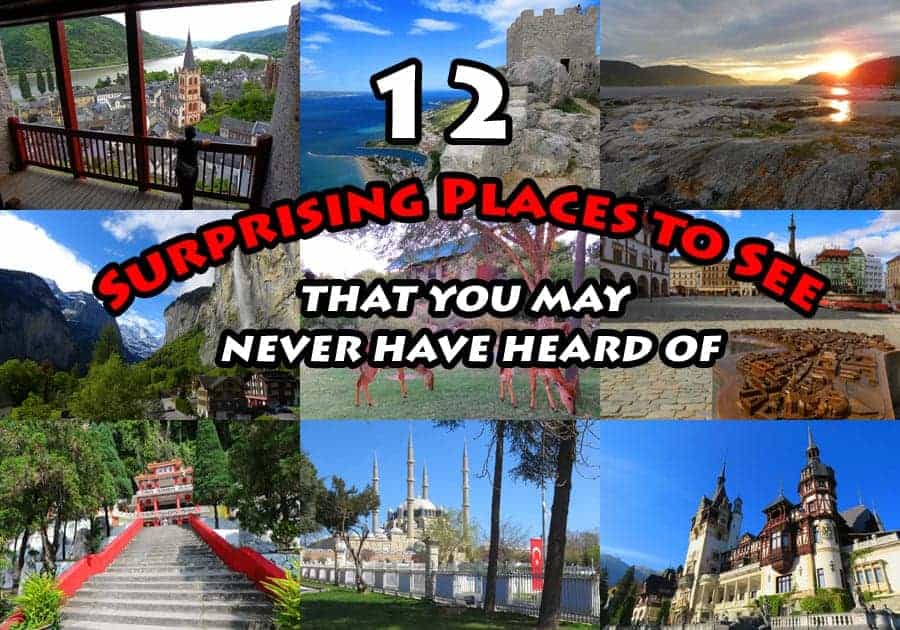
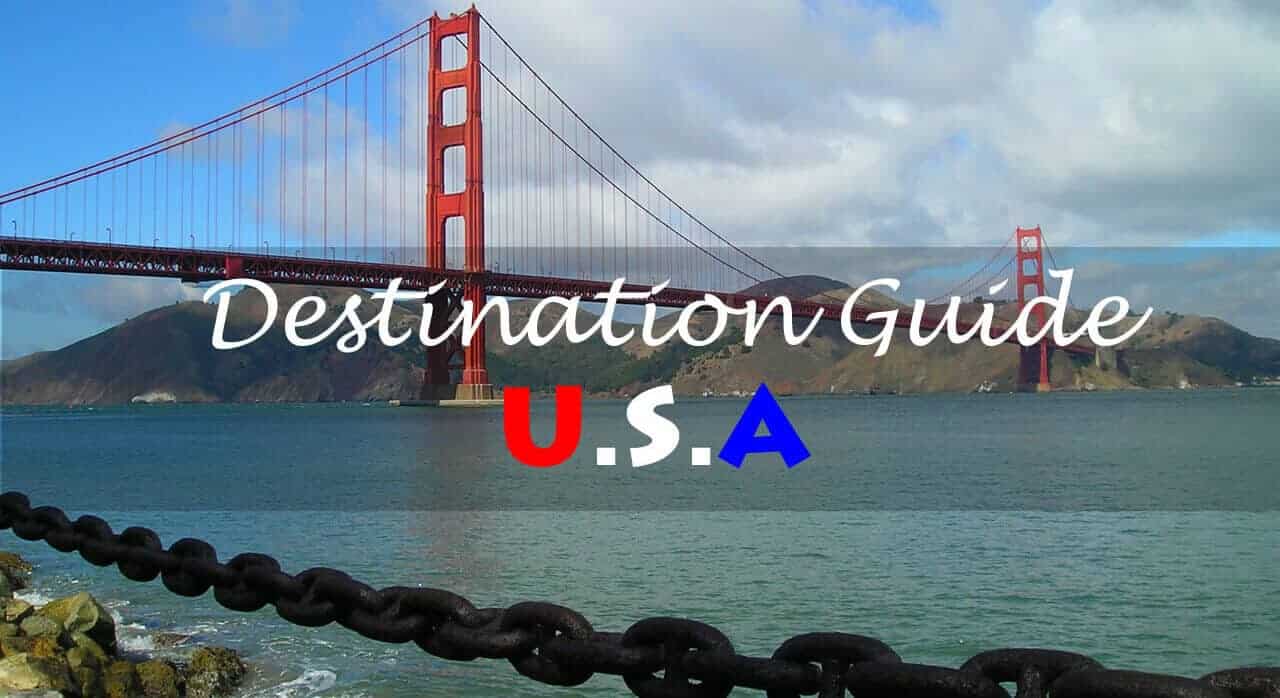
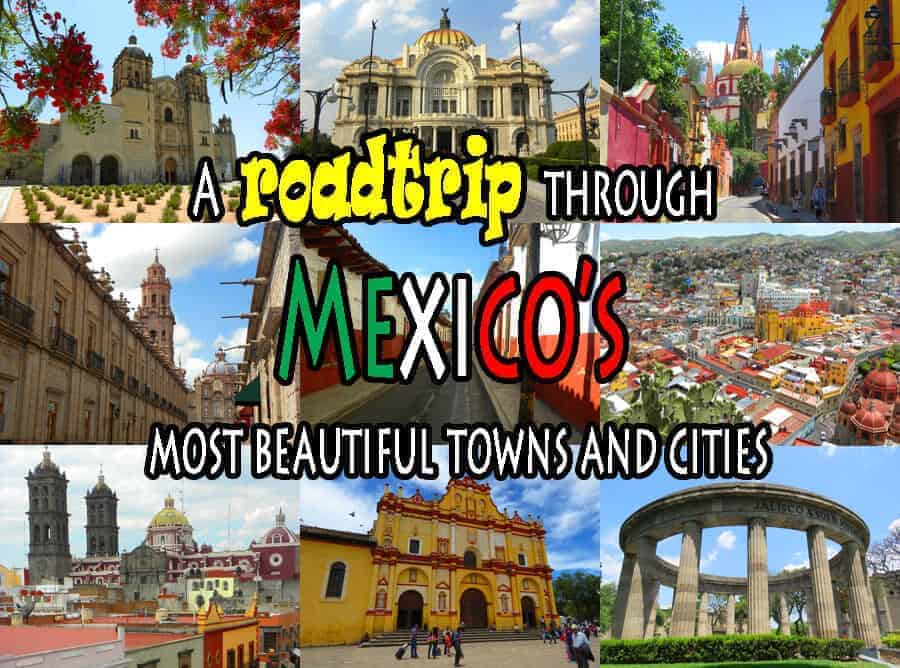
Leave a Reply